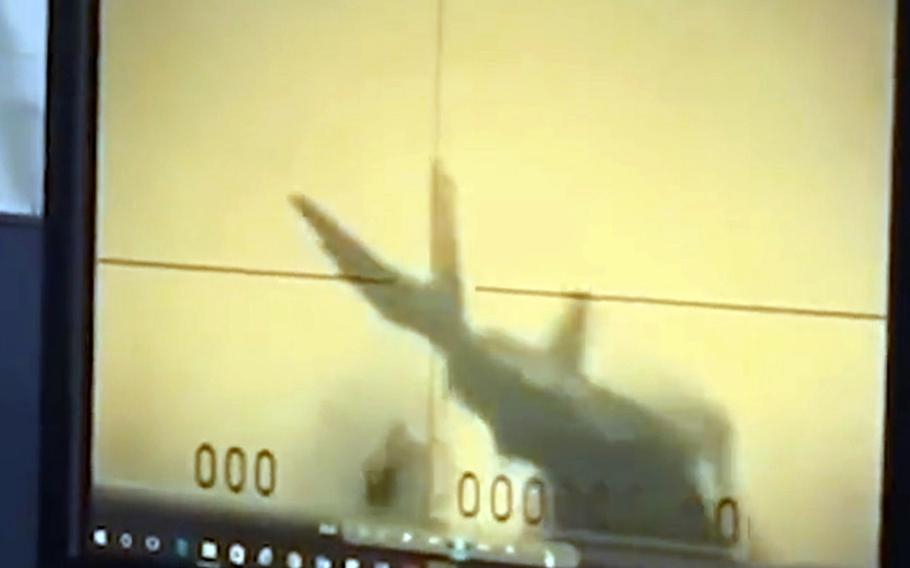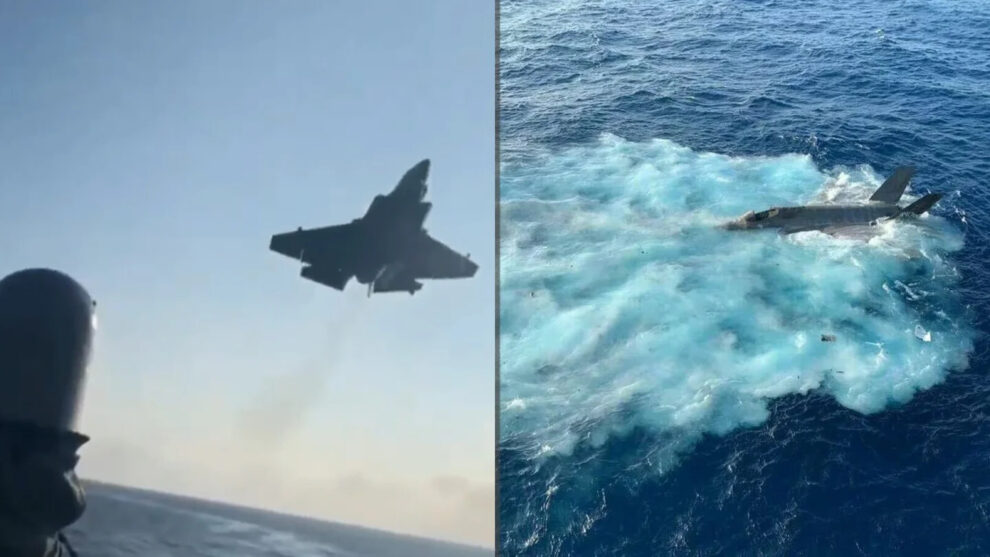A junior officer’s failure to complete a landing checklist during a specialized maneuver last year caused a fifth-generation fighter to crash into an aircraft carrier, injuring six sailors and destroying the $115.3 million jet, the Navy determined.
The pilot, an unnamed lieutenant assigned to Strike Fighter Squadron 147, failed to complete his checklist before attempting to land the F-35C Lightning II aboard the USS Carl Vinson on Jan. 24, 2022, according to the accident investigation report provided to Stars and Stripes on Thursday by Naval Air Forces Pacific spokesman Cmdr. Zachary Harrell.
As a result, the pilot failed to transition from a manual control mode to automatic, the F-35C did not behave as he expected and it subsequently crashed onto the flight deck, according to the report.
Video footage of the crash leaked on social media in February 2022 shows the fifth-generation fighter striking the Carl Vinson’s deck, bursting into flames and skidding across the deck before falling into the South China Sea.
The Navy recovered the jet from the ocean floor on March 2, 2022, more than a month after the crash.

On his approach, the pilot attempted an expedited recovery maneuver, also referred to as a “Sierra Hotel Break” by pilots. However, his “lack of familiarity” with the maneuver and the loss of “situational awareness” led to the crash, Vice Adm. Karl Thomas, 7th Fleet commander, said in the report.
“This mishap was the result of pilot error,” Thomas wrote in his endorsement. “The mishap pilot (MP) attempted an expedited recovery breaking overhead the carrier, an approved and common maneuver, but the MP had never performed this maneuver before and it reduced the amount of time to configure the aircraft and conduct landing checks.”
During an expedited recovery maneuver, pilots use gravity to rapidly decelerate their aircraft during a 360-degree turn before landing on an aircraft carrier; the maneuver can reduce the time necessary to recover an aircraft, according to the report.
During this maneuver, however, the pilot failed to transition from a manual control mode to an automated one. Unaware of this mistake, the pilot’s subsequent adjustments and corrections to the aircraft’s thrusts were not what he expected, according to the report.
Source: Stars & Stripes










